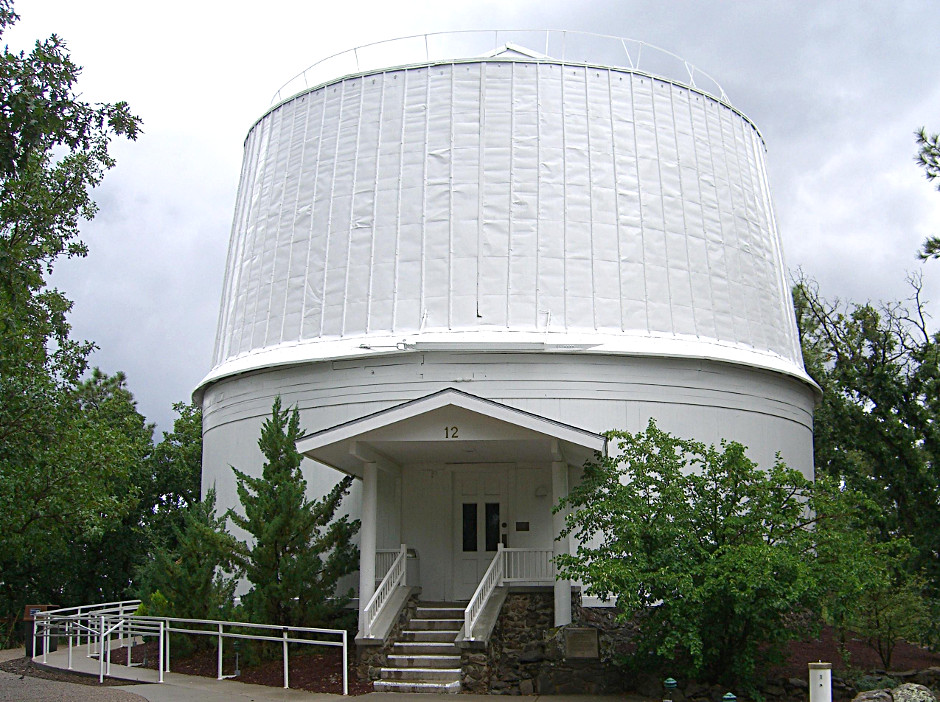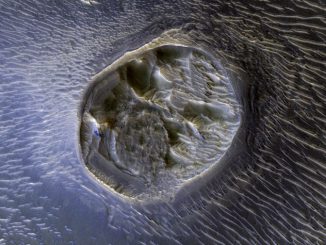
Led by major donations from philanthropists Joe Orr and the Toomey Foundation for the Natural Sciences, plus a crowdfunding effort, the Observatory raised nearly $300,000 to complete the work.
Samantha Christensen played a lead role in the fundraising effort and now serves as the Observatory’s Outreach Manager. She said, “The Clark was in desperate need of repair and the community at large really came together to support this project.”
On Tuesday, 28 January 2014, pieces of the Clark Telescope were removed by crane. This marked the beginning of the restoration project to return the telescope to its former glory. Video credit: Todd Gonzales.
Led by Lowell’s Director of Technical Services Ralph Nye, a crew removed the telescope and examined every part, down to the nuts and bolts. Their two-part goal was to return all parts to working order while cleaning and beautifying the facility. They repaired or replaced components as needed and reassembled the instrument in the dome, which also saw major repairs. The telescope now works better than when it was first built and the entire facility sparkle.
Lowell Observatory Director Jeffrey Hall said, “Hundreds of thousands of people have enjoyed the opportunity to peer through the Clark in the past. We are pleased to complete this much-needed renovation so many more in the future can experience this treasure.”
For decades, the telescope was used for major astronomical research, including Percival Lowell’s controversial studies of Mars, V.M. Slipher’s first detection of the expanding nature of the universe, and mapping the Moon for the Apollo program. It played a secondary role in the discovery of Pluto and was used by astronauts as they trained for Moon mission.
In recent decades, the Clark had been used for the Observatory’s public programs, allowing every guest to tour it during the day and view through it at night.
Lowell historian Kevin Schindler said, “The Clark’s scientific, historical, and cultural importance is staggering. It has played a major role in understanding the universe around us, first as a research instrument and later as an educational tool. Now that it is reopened, its legacy of inspiring and educating the public can continue.”



